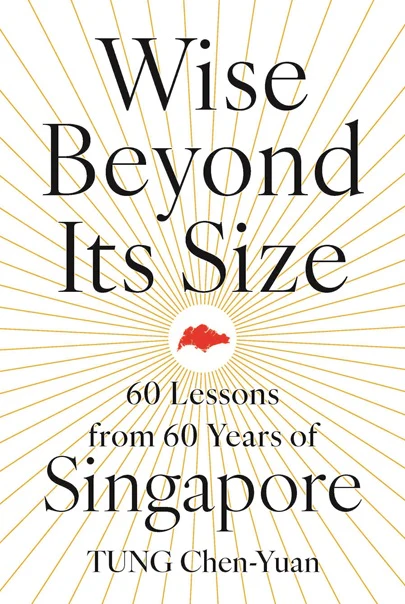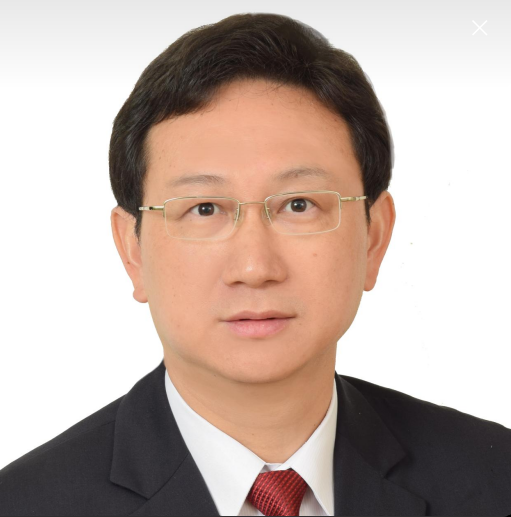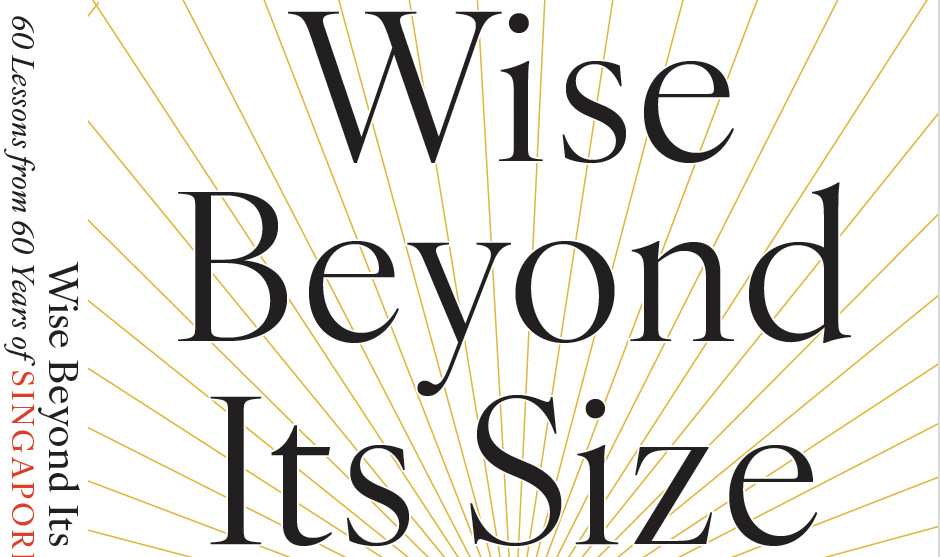By Dr. TUNG Chen-Yuan (currently Taiwan’s Representative to Singapore).
Chapter 1: Rise – From Impoverished Island to Global Economic Powerhouse
This year (2025) marks the 60th anniversary of Singapore’s independence. This tiny island nation, through exceptional internationalization and globalization strategies, has successfully transformed itself from a resource-poor, politically unstable, and economically backward land into a prosperous and powerful global economy—a transformation widely regarded as a modern miracle.
On August 9, 1965, Singapore was forced to separate from the Federation of Malaysia and declared its independence. At a televised press conference, Prime Minister Lee Kuan Yew tearfully and emotionally announced that Singapore had officially become a sovereign nation. However, the people of Singapore did not greet independence with celebration; instead, they were filled with anxiety about their uncertain future.
At that time, Singapore had only 581 square kilometers of land and a population of 1.89 million. It faced extreme resource scarcity—even water had to be imported from Malaysia. The island lacked a hinterland and an industrial base. Internally, it was plagued by racial tensions, frequent strikes, an active communist movement, and high unemployment, all of which contributed to social unrest. Poverty and underdevelopment were stark realities. Externally, Singapore faced military threats from Indonesia and distrust from Malaysia.
The international community was generally pessimistic about Singapore’s future. Many media outlets even questioned whether the country could survive. For instance, on August 10, 1965—the day after independence—the Sydney Morning Herald published an article stating: “An independent Singapore was not regarded as viable three years ago. Nothing in the current situation suggests that it is more viable today.”
Challenges emerged rapidly. Malaysia threatened to cut off Singapore’s water supply in an attempt to force compliance with its foreign policy. Indonesia severed Singapore’s access to its southern hinterland, further weakening its role as a transshipment hub. In 1968, the United Kingdom announced the withdrawal of its military forces from Singapore, leading to the loss of thousands of related jobs and placing one-fifth of Singapore’s economic activities at risk of stagnation.
Yet, after sixty years of relentless effort, Singapore has transformed from a struggling and isolated island into a global economic and financial center—one of the most developed nations in Asia and the world. Typically, a generation spans 30 years; the following sections, through two tables and relevant statistics, will show how Singapore raised its standard of living within two generations. We will then examine trade data to understand how strategic decisions made after independence enabled Singapore to become one of the first economies to capitalize successfully on globalization.
Note: On August 10, 1965, Prime Minister Lee Kuan Yew met with three leaders of the Malaysian Solidarity Convention to explain Singapore’s separation from Malaysia, and said that he had let the Convention’s leaders down. Pictured from left to right: one of People’s Action Party’s leaders S. Rajaratnam, Prime Minister Lee Kuan Yew, People’s Progressive Party Leader D. R. Seenivasagam, Sarawak United People’s Party leader Ong Kee Hui, and United Democratic Party leader Lim Chong Eu. Despite the painful news, the politicians tried their best to project a picture of harmony.
Singapore’s nominal Gross Domestic Product (GDP) grew from SGD 3 billion in 1965 to SGD 731.4 billion (approximately USD 547.7 billion) in 2024, achieving a compound annual growth rate (CAGR) of 11.6%. At this pace, the nominal GDP doubled roughly every 6.3 years. During the same period, the real GDP grew at a CAGR of 6.8%, doubling approximately every 10.5 years.
In terms of individual income, per capita GDP increased from SGD 1,581 (around USD 516) in 1965 to SGD 121,161 (about USD 90,689) in 2024. The CAGR was 7.5% in SGD terms and 9.0% in USD terms. This means that per capita GDP doubled every 9.6 years in SGD terms and every 8 years in USD terms.
Despite the rapid growth in income, Singapore did not fall into the trap of widening income inequality. In recent years, the government has made efforts to improve income distribution. In 2000, Singapore’s Gini coefficient stood at 0.414 and peaked at 0.439 in 2007. By 2024, it had declined to 0.364, indicating significant progress in narrowing inequality. Government transfer payments and tax policies played a critical role in this improvement. For example, in 2024, the average government transfer per resident was SGD 7,825. Disadvantaged residents received SGD 16,805, while more affluent residents received only SGD 4,447.

In the labor market, the unemployment rate was in the double digits in 1965 and remained at 9.0% in 1966. It declined to 8.3% in 1970 and dropped further to 4.4% by 1973. By 1995, the unemployment rate had decreased to 1.7%, a level maintained through 2024.
Regarding prices, Singapore’s inflation rate has remained modest. It was just 0.4% in the second half of 1965 and 0.7% in 2024, with a historical average of only 1.3%.
The literacy rate also improved significantly, rising from 60.2% in 1965 to 90.8% in 1995, and reaching 97.6% by 2021. Life expectancy rose from 64.5 years in 1965 to 76.3 years in 1995, and further to 83.0 years in 2024.
In terms of external economic engagement, Singapore has long served as a trade transshipment hub and gradually evolved into a regional headquarters for multinational corporations. The trade-to-GDP ratio was already 258% in 1965, increasing to 345% in 1995 and 322% in 2024. From 1965 to 2024, the average trade-to-GDP ratio stood at 322%.
Since independence, Singapore has proactively attracted foreign direct investment (FDI). In 1970, the accumulated stock of FDI stood at SGD 1.4 billion. By 1995, it had increased to SGD 92.8 billion, and by 2023, it surged nearly 30-fold to SGD 2.8431 trillion.
Additionally, since the mid-1990s, Singapore has actively invested abroad. Outward direct investment increased from SGD 49.6 billion in 1995 to nearly SGD 1.5233 trillion in 2023—another near 30-fold increase.
Singapore has consistently pursued prudent and sound fiscal policies. In 1997, the fiscal surplus accounted for 3.5% of GDP, while in 2024 it stood at 0.9%, with an average of 0.3% from 1997 to 2024.
Singapore’s foreign reserves grew from SGD 4.1 billion in 1972 to SGD 97.3 billion in 1995, and further to SGD 506.7 billion in 2024, with a CAGR of 9.5%. Notably, from 2003 to the end of 2024, the Singapore government maintained zero external debt.
The table 1-6 shows that despite facing challenging conditions over the past 60 years, Singapore has maintained stable high economic growth, low unemployment, and very low inflation. The compound annual economic growth rate was 7.0%, the average unemployment rate was 3.0%, and the average inflation rate was 1.3%.
Between 1965 and 1969, Singapore experienced rapid economic growth, averaging 11.6%. The unemployment rate remained high at 8.3% in 1970, while the inflation rate stayed low at 0.6%. In the 1970s, the average growth rate declined to 9.2%, but the unemployment rate dropped significantly to 4.5%, and inflation rose slightly to 2.9%. From 1980 to 1999, the average economic growth rate remained above 7%, while both unemployment and inflation continued to decline. Between 2000 and 2019, the average growth rate stayed above 5%, with unemployment and inflation remaining roughly at the same levels as the previous period.
Singapore is one of the earliest and most successful economies to harness the opportunities of globalization. This success stems from two strategic decisions made by the government after independence, both of which diverged from mainstream economic thinking at the time. First, Singapore abandoned import substitution and adopted an export-oriented industrialization strategy. Second, it introduced generous investment incentives and implemented efficient administrative measures to attract multinational corporations. The following sections examine trade and investment data to evaluate the impressive achievements of the past six decades.
Since 1965, Singapore’s external trade (covering both goods and services) has experienced remarkable growth. In 1965, the total trade value was only SGD 800 million, but it doubled to SGD 1.6 billion by 1970. By 1980, it had expanded 5.6 times to reach SGD 10.6 billion. In 1990, trade doubled again to SGD 24.3 billion, and by 2000 it had increased another 1.5 times to SGD 60.4 billion. In 2010, the total trade value doubled once more, surpassing SGD 120.9 billion, and by 2024, it had nearly doubled again to reach SGD 235.8 billion.
Overall, from 1965 to 2024, Singapore’s external trade achieved a compound annual growth rate (CAGR) of 10.0%, meaning it doubled approximately every 7.3 years—clearly demonstrating the country’s extraordinary global competitiveness.
In terms of attracting foreign investment, the Singapore government passed the Economic Expansion Incentives Act in 1967, which offered tax concessions to foreign investors. Starting in 1968, the Economic Development Board (EDB) of Singapore focused on attracting investments from multinational corporations.
In 1970, the cumulative stock of foreign direct investment (FDI) in Singapore was only SGD 1.4 billion. By 1980, it had increased sevenfold to SGD 11.2 billion. In 1990, it grew another 3.7 times to SGD 53.2 billion. By 2000, it rose 2.6 times further to SGD 191.5 billion. In 2010, it more than doubled again to reach SGD 665.1 billion. As of 2024, the FDI stock had grown 3.3 times to SGD 2.8431 trillion.
The compound annual growth rate (CAGR) of Singapore’s FDI stock reached an impressive 15.1%, meaning the total stock of foreign investment doubled approximately every five years.
Multinational corporations (MNCs) play a vital role in Singapore’s economic development. According to the latest government statistics, there were 23,119 MNCs operating in Singapore in 2022, accounting for 7.7% of all enterprises. These corporations employed 918,000 workers, representing 25.3% of the total workforce across all enterprises.
The nominal value added generated by these MNCs amounted to SGD 433.3 billion, making up 61.7% of Singapore’s GDP and 68.2% of the total value added by all enterprises. Additionally, MNCs contributed SGD 892.6 billion in exports (including goods and services), which accounted for 78.0% of the nation’s total exports. On the import side, they brought in SGD 814.8 billion worth of goods and services, representing 79.5% of total imports.
These figures clearly demonstrate the substantial contribution of multinational corporations to Singapore’s economy.
Since the 1990s, Singapore’s outward investment has accelerated significantly. In 1994, the cumulative stock of Singapore’s outward direct investment reached SGD 28.4 billion. By 2004, it had grown 5.3 times to SGD 179.6 billion. In 2014, it increased another 2.6 times to SGD 651.2 billion. By 2024, it had grown by a further 1.3 times to reach SGD 1.5233 trillion.
Overall, Singapore’s outward investment stock achieved a compound annual growth rate (CAGR) of 12.5%, meaning the total amount of overseas investment doubled in less than six years.
Between 1970 and 2023, Singapore’s per capita GDP grew significantly and was closely correlated with the stock of foreign direct investment (FDI), outward direct investment, and the total value of external trade in goods and services. Statistical analysis shows that the Pearson correlation coefficient between per capita GDP and FDI stock (1970–2023) was 95.4%. The correlation with outward direct investment stock (1994–2023) was 96.3%, and with total external trade (1965–2023), it was even higher at 98.4%. All three correlations were statistically significant (p < 0.05).
Further regression analysis used FDI stock, outward direct investment stock, and external trade value as independent variables, and per capita GDP (in USD) as the dependent variable. The regression model had an adjusted R-squared of 0.973—meaning it explained 97.3% of the variance after adjusting for degrees of freedom. The F-statistic was 351.5, indicating strong overall model significance (p < 0.001).
Among the variables, only external trade in goods and services showed a highly significant positive coefficient of 26.71 (p < 0.001), suggesting a clear and substantial positive impact on per capita GDP. The other two variables—FDI stock and outward direct investment stock—did not reach statistical significance, and there was evidence of multicollinearity between them.
Based on the regression results, trade in goods and services emerges as the most consistent and significant driver of Singapore’s per capita GDP. While FDI and outward investment are each strongly correlated with GDP when considered individually, their overlapping effects suggest possible interaction or redundancy, warranting further analysis.
In summary, globalization—especially in the form of external trade, foreign direct investment, and outward investment—has been a key factor in transforming Singapore from a poor island into a global economic powerhouse.
About the Author:

Dr. Tung Chen-Yuan is currently Taiwan’s Representative to Singapore. He was Minister of the Overseas Community Affairs Council of the Republic of China (Taiwan) from June 2020 till January 2023. He was Taiwan’s ambassador to Thailand from July 2017 until May 2020, senior advisor at the National Security Council from October 2016 until July 2017, and Spokesman of the Executive Yuan from May to September 2016. Prior to taking office, Dr Tung was a distinguished professor at the Graduate Institute of Development Studies, National Chengchi University (Taiwan). He received his Ph.D. degree in international affairs from the School of Advanced International Studies (SAIS), Johns Hopkins University. From September 2006 to May 2008, he was vice chairman of the Mainland Affairs Council, Executive Yuan. His areas of expertise include international political economy, China’s economic development, and prediction markets.



